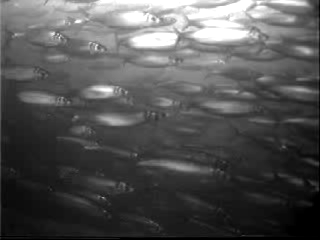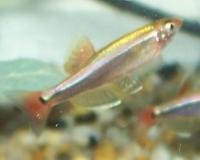
To Shoal or To School?
In the ocean, about 25% of the Fish shoal for life, while about 50% of them shoal only for parts of their lives. Any group of fish that stay together for social reasons, such as foraging on the sea bed, are said to be shoaling. If a group of fish are all swimming in the same direction, and maneuvering in a coordinated manner whether to feed or to avoid predators, then they are said to be schooling or in a school of fish.
Shoaling and Schooling provide many benefits to the individual and usually smaller fish. While together, the fish can detect predators or other danger much quicker. There are fish known to shoal while feeding, then quickly school when sensing danger, and then immediately go back to shoaling when the threat is gone. Both shoaling and schooling enhances their ability to forage or hunt for food as well. By remaining together, the fish can communicate to each other information about where to find the food or when there is danger. This quick communication allows the school of fish to maneuver in a coordinated manner for greater success. Some of these schools of fish have been known to extend for kilometers. These types of events are the sources of energy needed for the Ocean's Food Chain to continue successfully, both for the little fish as well as the bigger creatures of the Ocean (hint hint cetaceans).
Success in School
So now we know that it's the little fish that is extremely important to the continuance of the Ocean's food cycle. Without the little guy, the "Engine" stops working, and the whole thing crashes. And nobody wants that. We also know, that for better odds of survival, the little finish needs to go to school, a school of fish. The school has 3 basic rules to follow for its success. The first rule is to move with your neighbor, along the same path in the same direction at all times. Rule number two is to remain close to your neighbor in order to remain aware of what is going on and the third rule is to avoid colliding into your neighbor at all costs. This will ensure for as much success as possible in both the survival of the school during attack or during feeding especially when in frenzy mode.
STEEMIT MINNOWS 

Here on STEEMIT.COM, the same collective philosophy applied by schools of fish can be applied to our every day STEEMIT activities. So if you see and read good content being up voted, then join in as well. Leaving a comment is also helpful. And for those on the receiving end, the act should be reciprocated when possible especially if you are a whale or dolphin. I realize that if you get 200 up votes and 50 comments you might not be able to return the favor to all, but doing so to at least a few or more would be considered to being moving in flow with your fellow STEEMIT neighbor. Then there is the Follow Button keeping you in touch with others on STEEMIT, adhering to rule two. And finally, by following the first two rules this will ensure that we avoid clashes or "collisions" with other STEEMIT members. The Minnows are currently about 85% of the user base and growing, but it is the Whales at less than 1% the user base that currently have more than 88% of the STEEMIT STAKE. It is in the best interest of the Whales to ensure the success of the Minnows. The success of the School of Minnows will continue to fuel the cycle of STEEM's success.
Full $TEEM Ahead!

@streetstyle
#steemit #steem
My Top Blogs
**Resources:
-photo cred gif#1: By Kils at en.wikipedia (Own work Transferred from en.wikipedia.) [GFDL (http://www.gnu.org/copyleft/fdl.html) or CC-BY-SA-3.0 (http://creativecommons.org/licenses/by-sa/3.0/)], via Wikimedia Commons
-photo cred pic #1: By Darkfalz at English Wikipedia [Public domain], via Wikimedia Commons
Wikipedia.org
Resources.com
